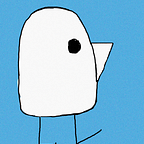The Art of Replayability
And why the second play through never feels the same
Finishing a good game is hard. By stepping away from the world you’ve immersed yourself in for the past ten, twenty, or even forty hours, you relegate loveable characters and sights into faint memories. You want to keep playing, but artificially stopping the game’s flow only sours your experience. As you reach the ending, a tinge of sadness gets mixed into the emotional climax — something remarkable has just ended, and it might never happen again. After a few days off, you pick up the controller in pursuit of that special feeling. But something’s not right. The gameplay no longer feels as engaging, almost tedious, the level design and enemies leagues below the skillset you’ve developed over hours of playing. The characters seem flat, and the story beats feel predictable. Now frustrated, you start looking around for new games that will hopefully push the same buttons. There’s nothing left after you finished, only memories that can be cherished but not replicated.
Games are fundamentally a medium to tell stories through, and a fundamental part of stories is that they end.
Tension and release are the building blocks of all narratives. Building tension through developing character relationships, plot points, and the world creates and retains interest. Tension is…
